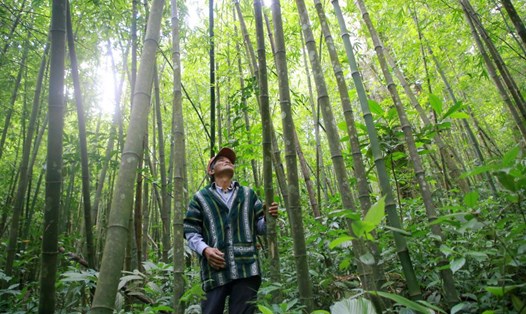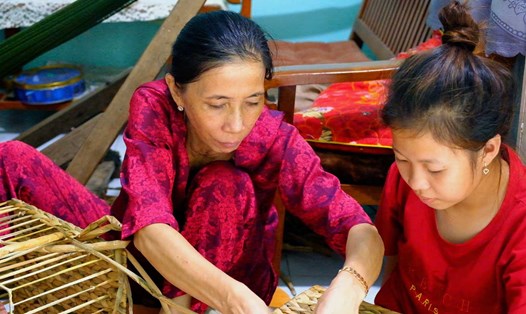Sedge is a wild plant, people just need to go to the fields to pick it up to use, weave into cushions, hats... This grass often grows in acidic and saline flooded areas throughout the marshes of the West. Sedge belongs to the sedge family, with upright stems. Mature plants are about one meter tall, and bloom regardless of the dry or rainy season. Although people can cut Sedge all year round, the harvest is concentrated during the flood season, from August to November every year.
Photographer Nguyen Khanh Vu Khoa (HCMC) spent a lot of time visiting the “alum navel” of Dong Thap Muoi, recording the “life” of the sedge plant and depicting the beauty of local labor.
He said he had to wake up at dawn to follow the farmers in My Hanh Bac commune to the sedge fields. According to him, Long An is a land of special natural beauty. Besides the lotus flowers in the flood season, there is also the rich green color of the sedge fields in the alum soil of the Mekong Delta.
The sedge grass is a gift from nature to the people of the West, and Duc Hoa district is like the “kingdom” of sedge grass in Long An. But as modern society develops at a faster pace, the sedge grass fields are gradually decreasing as this plant is absent from daily life.
Mr. Nguyen Thanh Tuan, 65 years old, a resident of Tram Lac Hamlet (My Hanh Bac Commune, Duc Hoa District, Long An) shared: “This is a traditional job passed down from my father. Since I was a child, I have followed my parents to the sedge fields. Harvesting grass is very hard, especially cutting grass because there is absolutely no machinery, it has to be done by human power.”
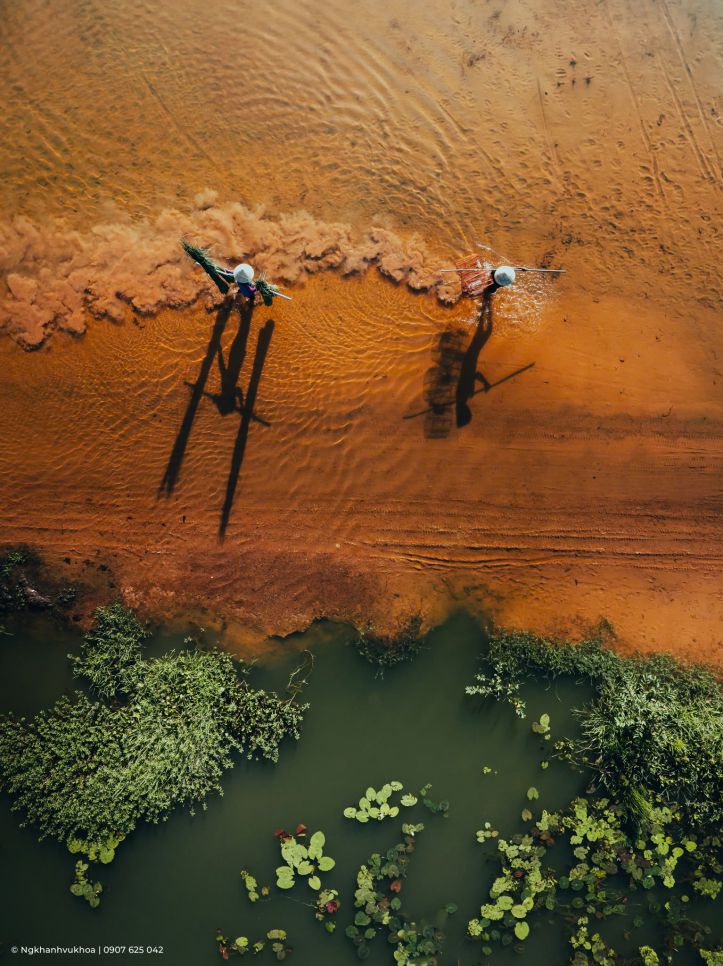
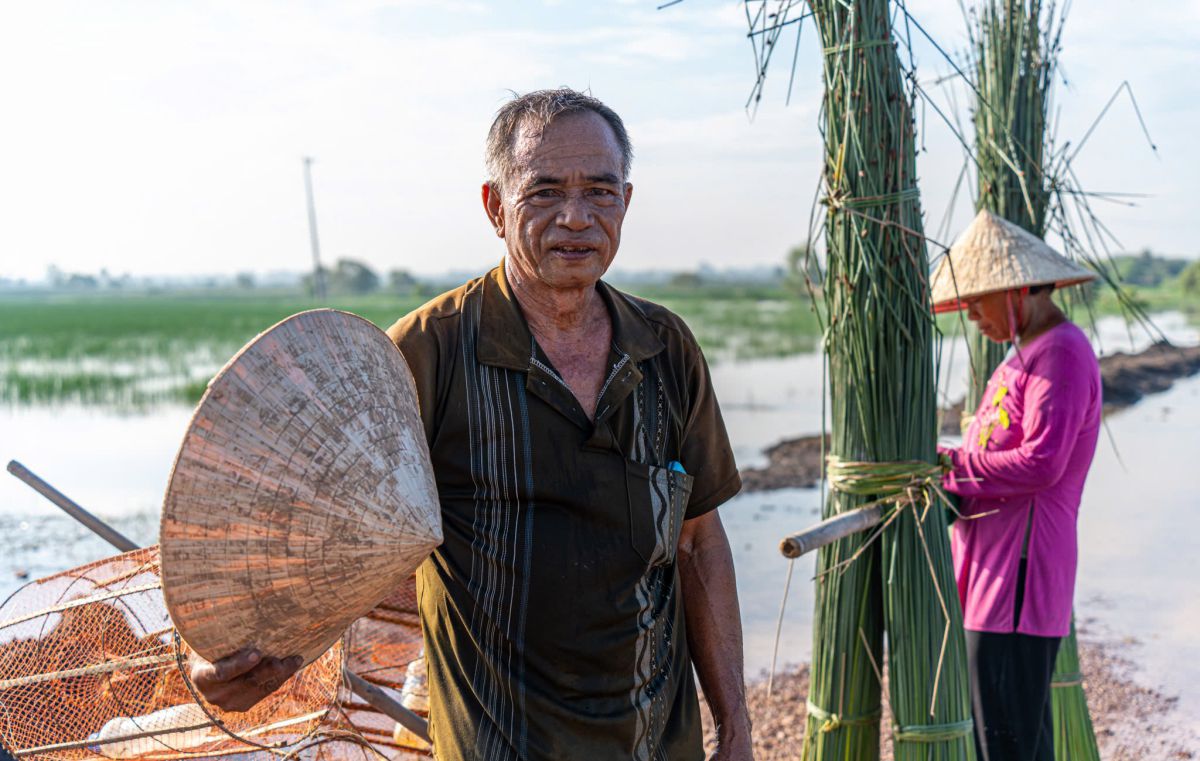
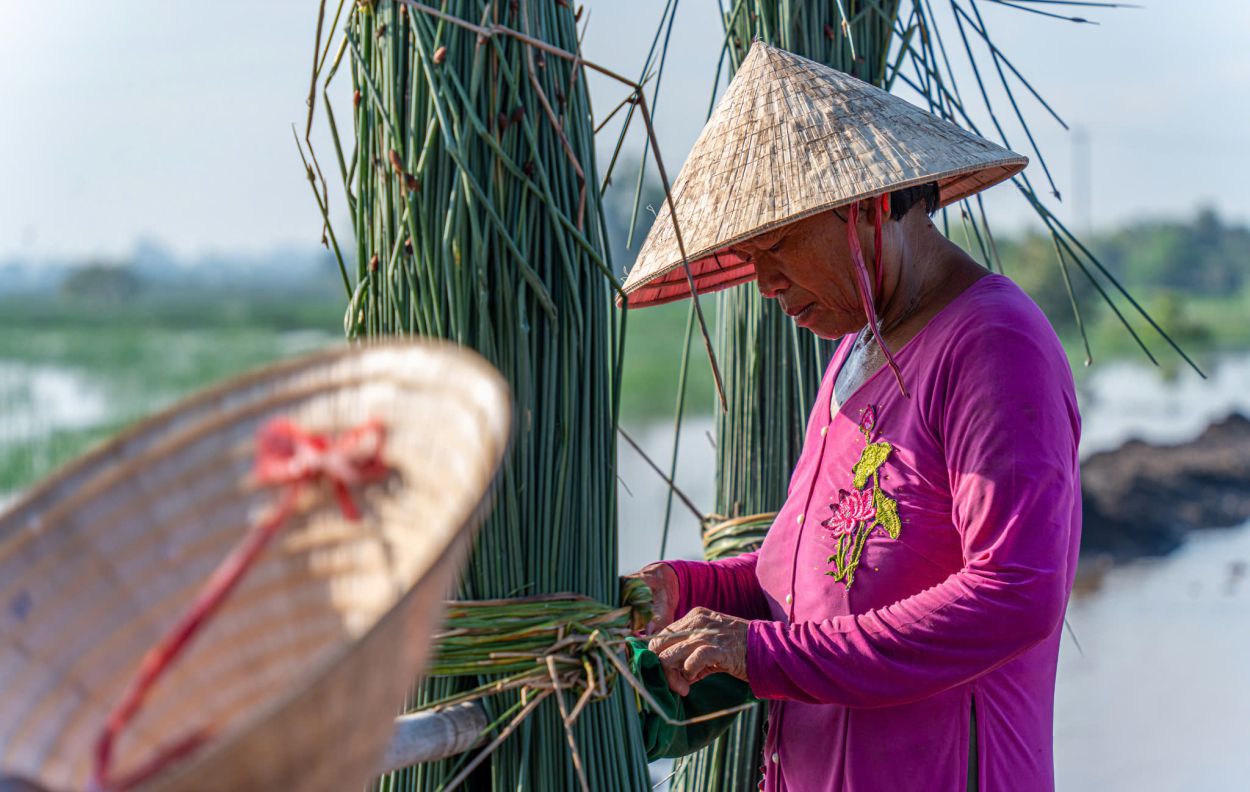
The income from cutting sedge is just enough to cover daily expenses, not much more. Mr. Tuan said that his children and grandchildren now find it difficult to help with farming because they are busy with company work, school, etc. He and other villagers in the hamlet still follow this profession because they have been used to farming since ancient times, and want to earn more money - not too much but a stable income.
Although the work is hard and the income is not too high, many farmers and workers still work hard day and night with sedge. With their love for the job, they hope to contribute to preserving the traditional craft, the unique culture of their homeland and bringing sedge to the world.
Currently, some young people and business owners are trying to promote sedge, turning this wild plant into an export product to the world, while increasing income for local people. For example, in My Thanh Dong commune, Duc Hue district, Long An, there is a facility producing sedge straws for export to Europe.
Unlike the sedge used for weaving by hand, the grass used to make straws must be fresh to maintain its durability for 5 days, and manually cut into pieces about 18 - 20cm long so that the mouth of the straw does not crumble. Every day, the facility can produce more than 10,000 straws, exported to demanding markets such as the US, Japan, Europe, etc.
In addition, the craft of weaving sedge cushions and making handicrafts from sedge is also maintained. In addition to selling to traders, Long An people harvest to make handicraft products such as weaving cushions, making hats, packaging, roofing... These products are sold at wholesale markets, increasing the income of idle workers living in the area. The sedge growing profession helps many families improve their lives and build more spacious houses.
Currently, many sedge plants in Duc Hoa and Duc Hue districts are purchased by traders to bring back to Tien Giang to sell to basket and mattress production facilities for export. At the same time, sedge plants also help people maintain the traditional mattress weaving profession for generations, contributing to stabilizing life and developing the economy.
The sedge harvest season in Duc Hue is not only a busy time but also an opportunity for local people to connect with each other, preserve and develop traditional crafts, creating a unique cultural beauty of Long An. Visitors who have the opportunity to visit Long An should not miss the opportunity to explore local life during the sedge harvest season, and see water lilies during the flood season from August to November every year.







